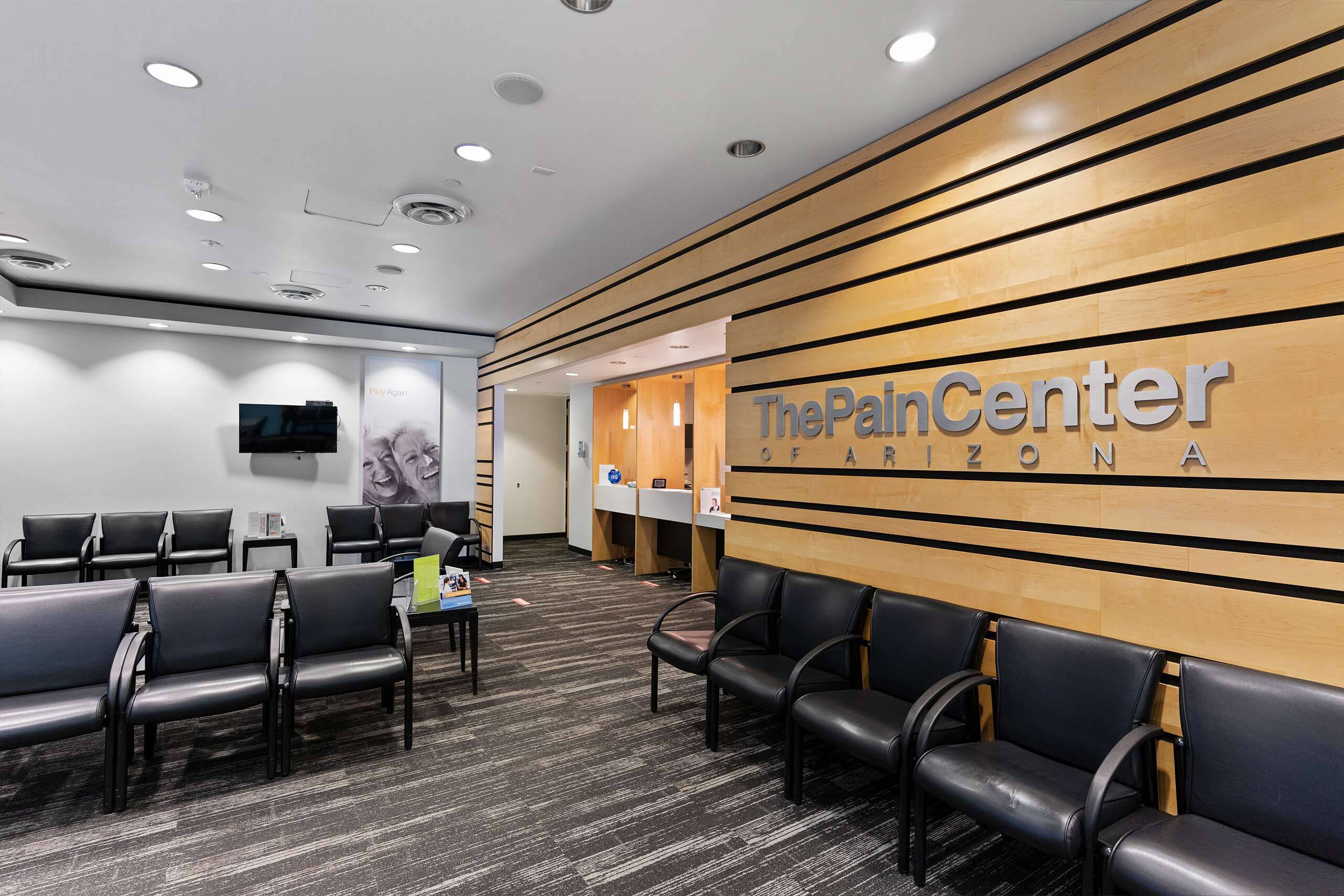Ankylosing Spondylitis Pain Relief
Ankylosing spondylitis is a type of arthritis that generally affects the spine but may impact other joints in the body as well. This inflammatory disease could lead to a number of health problems, including severe chronic pain and discomfort, vertebral disc fusions, and structural abnormalities such as kyphosis. Signs of ankylosing spondylitis typically begin in early adulthood. Although there is no cure for ankylosing spondylitis, there are treatment options that may reduce pain symptoms.


Causes of Ankylosing Spondylitis
There is no known cause for ankylosing spondylitis, but genetic factors are usually indicators of the disease. Individuals with the HLA-B27 gene may be at an increased risk of developing ankylosing spondylitis.

Ankylosing Spondylitis Symptoms
Stiffness in the low back and hips is considered an early sign of the disease. Over time, symptoms may worsen or fluctuate depending on the condition’s severity level. The most common symptoms of ankylosing spondylitis include:
- Pain and stiffness between the base of the spine and pelvis
- Pain and stiffness between the breastbone, ribs, or shoulders
- Pain in the lower back
- Pain that worsens in the morning and with rest
- Severe sensitivity to light, blurred vision, or painful, red eyes
How to Treat Ankylosing Spondylitis
To prevent or delay the effects of ankylosing spondylitis, patients should consider seeking treatment for the condition. Treatment for ankylosing spondylitis may include:
Medication Management
Medication management is a multifaceted procedure that allows pain specialists to oversee patients’ prescription pain medications for chronic pain. A specialist in pain management equips patients with the necessary resources, understanding, and guidance to ensure accurate and appropriate intake of prescribed pain medication.
Radiofrequency Neurotomy
Radiofrequency neurotomy, known as radiofrequency ablation, is a less invasive technique to alleviate discomfort in the facet or sacroiliac joints. A fine needle directs small electrical currents toward the nerves encircling the affected joint(s), inducing pain. Applying these electrical currents in the form of radiofrequency waves generates a thermal lesion that effectively interrupts the transmission of pain signals from the painful area to the patient’s brain.
Facet Joint Injections
These injections comprise a blend of anesthetics and pain medication, functioning as a medial branch block, and are administered into the spinal region using diagnostic imaging (fluoroscopy) and contrast dye. If the anesthetic brings relief to the targeted area, it signifies the identification of the problematic facet joint. Consequently, additional interventional therapies like radiofrequency neurotomy can be pursued to extend the overall pain relief experienced by the individual.

What is the Prognosis Life Expectancy for Ankylosing Spondylitis?
People with ankylosing spondylitis have the same life expectancy as the general population. While this isn’t a fatal condition, it’s an inflammatory autoimmune disease and can significantly impact an individual’s quality of life and levels of chronic pain.
What Are the Red Flags of Ankylosing Spondylitis?
If you or a loved one suspect ankylosing spondylitis, look for the five following indicators:
- Stiffness and increased pain in the morning that lessen throughout the day
- Pinched nerves and muscle problems
- Fatigue from body inflammation
- Restricted chest movement, difficulty breathing
- Painful, red eyes
Make an appointment with your healthcare provider if you suspect ankylosing spondylitis so you can receive a proper diagnosis and begin treatment.
What are the 4 Body Areas Affected By Ankylosing Spondylitis?
Ankylosing spondylitis targets the spine but may also inflame other body areas, such as the pelvis, shoulders, hips, and knees. The condition can manifest in many ways and affect multiple areas, but the most commonly impacted areas are the spine, sacroiliac joints, hips, and shoulders.
Make an appointment with your healthcare provider if you suspect ankylosing spondylitis so you can receive a proper diagnosis and begin treatment.
Commonly Asked Questions About Ankylosing Spondylitis
What is the most common symptom of ankylosing spondylitis?
Ankylosing spondylitis can cause several symptoms in a person with the condition, but the most commonly reported experience is chronic lower back pain and stiffness. The pain will start in the sacroiliac joints that connect the base of the spine and pelvis and begins to spread over time to other areas of the body.
Who usually gets ankylosing spondylitis?
Ankylosing spondylitis is most common in individuals under the age of 45, typically between 20 to 40 years old. The condition can develop at any age, including children and teenagers. It’s more common in men than women, with the male-to-female ratio being 3:1. People with pre-existing conditions like Crohn’s disease, ulcerative colitis, or psoriasis may be at more risk of developing ankylosing spondylitis.
What autoimmune disease goes with ankylosing spondylitis?
HLA-B27 accounts for approximately 30% of the genetic influence on the development of ankylosing spondylitis. “B27 disease” is an autoimmune disease that occurs in people with ankylosing spondylitis. Symptoms of B27 include low back and hip pain, stiffness in the morning, and sacroiliitis. Along with this, ankylosing spondylitis can lead to additional health problems, including,
- Reduced flexibility
- Joint damage
- Iritis
- Osteoporosis and spinal fractures
- Cardiovascular disease
- Cauda equina syndrome
- Psoriasis
- Inflammatory bowel disease (IBD)
What can be mistaken for ankylosing spondylitis?
Due to the variety of symptoms that come from ankylosing spondylitis, it’s common to confuse it with other conditions that share similarities. Most commonly, ankylosing spondylitis is mistaken for…
- Chronic Lower Back Pain
- Reactive Arthritis
- Fibromyalgia
- Psoriatic Arthritis (PsA)
- Osteoarthritis
- Herniated Disc
- Enteropathic Arthritis
- DISH
- Non-Radiographic Axial Spondyloarthritis (nr-axSpA)


Get the care you need within 24 hours*
We know when you’re looking for relief for your chronic pain, you can’t wait any longer than you already have. This is why we can schedule you with an appointment within 24 hours at most of our pain centers across the Valley, so you can start your journey to life-long pain relief as soon as tomorrow.



